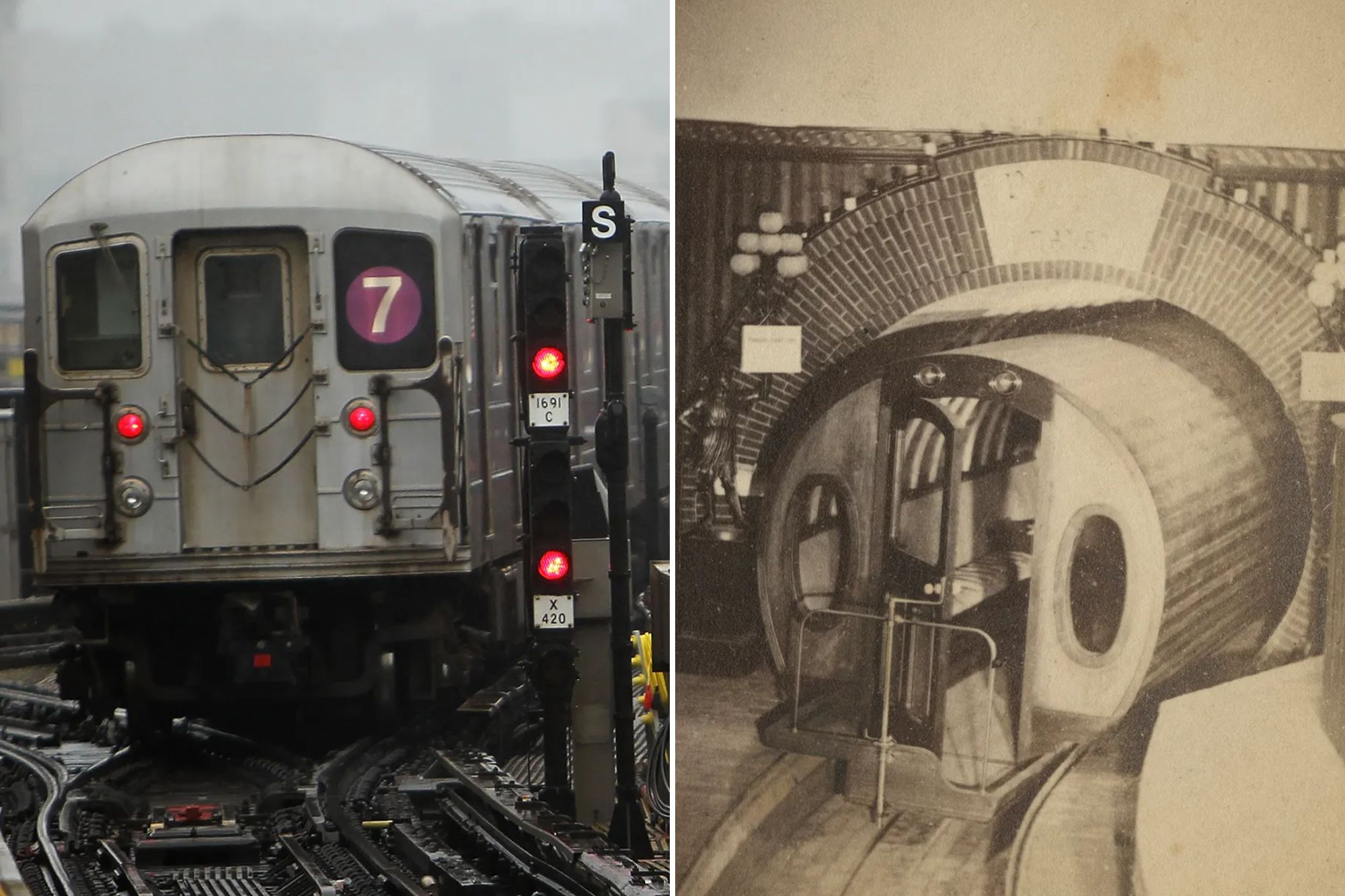Science
Inventor Alfred Ely Beach’s Secret Subway Paved Way for NYC Transit

On February 26, 1870, a clandestine event unfolded in New York City as inventor Alfred Ely Beach revealed an unauthorized subway tunnel beneath Broadway. This demonstration took place in the basement of Devlin’s clothing store in Tribeca, where elite guests descended into a luxurious, secret pneumatic tunnel that had not received approval from City Hall. Beach’s extravagant “Under Broadway Reception” aimed to showcase his innovative vision while captivating the city’s influential figures.
Beach’s tunnel was not merely a display of engineering prowess; it was a strategic move designed to garner public support for his ambitious plans. According to Matthew Algeo, author of “New York’s Secret Subway: The Underground Genius of Alfred Beach and the Origins of Mass Transit,” Beach invested heavily in the event, outfitting the waiting area with chandeliers and a grand piano. Guests enjoyed a plush experience in a richly upholstered subway car illuminated by zirconia lights, all in an effort to impress and influence lawmakers.
The evening was not just about spectacle. Attendees were encouraged to sign petitions urging the government to allow Beach to expand his line. Thousands complied, indicating significant public interest in his vision for a subway system. Beach had initially misled officials by claiming he was constructing a modest mail tube, but he instead excavated an impressive eight-foot-wide tunnel extending about 300 feet beneath Broadway. He believed that demonstrating a functional subway would be more persuasive than seeking permission from political leaders.
Despite the initial excitement, Beach faced formidable opposition. Boss Tweed, a powerful political figure, and other streetcar operators worked diligently to prevent the establishment of Beach’s subway. They attempted to undermine his efforts by influencing government officials, fearing that a successful subway would threaten their business interests. Beach’s strategy relied on creating a superior transportation experience to rally public support and overcome political resistance.
The pneumatic subway Beach unveiled that evening was designed to be cool, quiet, clean, and comfortable, a stark contrast to the crowded and dirty omnibuses and streetcars of the time. Beach envisioned that allowing New Yorkers to experience the subway firsthand would generate enough enthusiasm to propel his project forward. He believed so deeply in his solution for Manhattan’s traffic woes that he risked his reputation, fortune, and even potential incarceration to realize it.
However, concerns about the tunnel’s safety arose when city officials noted that the pavement above the excavation was sinking. Contractor Charles Guidet observed alarming signs of ground movement near City Hall and initiated an investigation. Mayor A. Oakey Hall noted similar concerns, but Beach dismissed their inquiries, asserting that the mayor had “no right to interfere.” Ultimately, Beach’s ambitious project never moved beyond its one-block demonstration.
Despite his efforts to garner public support, Beach could not overcome the political machinations that thwarted his dreams. The alliance of streetcar interests and City Hall effectively stalled his plans for expansion. Although Beach’s charter faced attempts at revocation by Tweed, the political maneuvering did not entirely succeed, as rival projects like Charles T. Harvey’s elevated line continued to progress.
New York City did not receive a true underground subway network from Beach; instead, it gained a glimpse into the future of urban transit. It would take another thirty years for the city to break ground on its first official subway line, which opened on October 27, 1904. Lower Broadway did not see a subway until 1918, underscoring the lengthy and complicated process of advancing infrastructure projects.
The challenges faced by Beach in the 19th century echo contemporary issues surrounding major infrastructure developments. Today, projects still encounter intricate permitting processes, local opposition, and legislative hurdles that can obstruct progress just as effectively as in Beach’s time. Algeo points out that Beach’s experience demonstrated that the obstacles to building a subway were less about engineering challenges and more about political opposition.
In a comparison of Beach’s pneumatic system to modern concepts like Elon Musk’s Hyperloop, Algeo notes the romantic allure of sealed tubes and sleek vehicles. While Beach successfully created a working prototype, the Hyperloop remains unproven, reliant on complex systems that have yet to be demonstrated in practice. Algeo quipped, “Beach built a complete working version of his concept, something that Musk has yet to do.”
The story of Alfred Ely Beach serves as a reminder of the ongoing struggle between innovation and bureaucracy in urban development, revealing the enduring impact of political dynamics on transformative ideas.
-

 Lifestyle5 months ago
Lifestyle5 months agoLibraries Challenge Rising E-Book Costs Amid Growing Demand
-

 Sports4 months ago
Sports4 months agoTyreek Hill Responds to Tua Tagovailoa’s Comments on Team Dynamics
-

 Sports4 months ago
Sports4 months agoLiverpool Secures Agreement to Sign Young Striker Will Wright
-

 Lifestyle4 months ago
Lifestyle4 months agoSave Your Split Tomatoes: Expert Tips for Gardeners
-

 Lifestyle4 months ago
Lifestyle4 months agoPrincess Beatrice’s Daughter Athena Joins Siblings at London Parade
-

 Science4 months ago
Science4 months agoSan Francisco Hosts Unique Contest to Identify “Performative Males”
-

 World4 months ago
World4 months agoWinter Storms Lash New South Wales with Snow, Flood Risks
-

 Science5 months ago
Science5 months agoTrump Administration Moves to Repeal Key Climate Regulation
-

 Business5 months ago
Business5 months agoSoFi Technologies Shares Slip 2% Following Insider Stock Sale
-

 Science5 months ago
Science5 months agoNew Tool Reveals Link Between Horse Coat Condition and Parasites
-

 Sports5 months ago
Sports5 months agoElon Musk Sculpture Travels From Utah to Yosemite National Park
-

 Science5 months ago
Science5 months agoNew Study Confirms Humans Transported Stonehenge Bluestones









